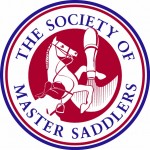Posted: 5th January 2017 | Back to news feed

The fit of your horse or pony’s bridle is so much more than simply how it looks and there are many points to consider in order that it fits and works correctly.
Without doubt a correctly fitting bridle is essential for your horse’s comfort and performance.
Here we will explain the process that should be undertaken to ensure your horse’s bridle is suitably fitted and also describe the correct way to put it on.

Firstly, we will go through the steps to correctly fit a snaffle bridle on your horse. It is advisable to have the horse tied up and then unfasten the noseband of the headcollar, whilst leaving the headpiece slightly pushed back whilst you put on the bridle.
The noseband and throat lash should be undone and the reins should be put over the horses head and back to the end of his neck. Make sure you are stood on the left hand side of your horse and take the bridle in your right hand with your right arm positioned under the horse’s jaw. The bridle should be held just under the brow band with both cheek pieces held together.
The bit should be held in the left hand and then press gently on the horse’s gums in the gap between his teeth until he opens his mouth. Then pull the bridle gently up the horse’s head, sliding the bit over the horse’s tongue.
Keep the bit in the mouth whilst you use both hands to slide the headpiece over the horse’s ears and secure it behind them. Then pull the forelock over the brow band. Check that the bit, noseband and brow band are all straight. Fasten the throat lash and noseband (and the flash if there is one). The noseband should sit on the inside of the cheek pieces.
You must ensure that the bridle sits in the correct position and fits properly. The bit should sit in the corners of the mouth and produce one crease in the lips.
The noseband should sit 1-2 cm below the cheek bones, except if it is a grakle which fits differently (in a figure of eight around the face). It can be adjusted but the long strap must not sit too high as this can cause the horse pain. For a plain cavesson noseband, or one with a flash attachment, you should be able to slide two fingers underneath it. The buckle should be fastened at the back of the jaw, between the jaw bones. If it is a drop noseband, it should be fitted very carefully so that it does not interfere with the horse’s airway. It should be lower down than a plain noseband but still resting on the horse’s facial bones rather than the soft fleshy area around his nostrils. The strap should fasten in the groove of the chin. You should be able to fit one to two fingers under it when fastened.
The brow band should sit in the natural groove below the horse’s ears and lie flat against his head. Make sure the brow band is not too tight as this will pull the headpiece forward onto the horse’s ears.
The throat lash should be fastened so that it can fit a fist between the leather and the horse’s jaw. It should not be too tight as this can interfere with the horse’s breathing and ability to flex at the poll. The buckles of the cheek pieces, noseband strap and ideally the throat lash should sit parallel when fastened.
Information about the Society of Master Saddlers can be found on the website www.mastersaddlers.co.uk or telephone 01449 711642.
The Equestrian Index newsfeed is compiled from articles submitted by advertising members and expresses the opinions of those members. Watsons Directories Ltd shall not be held liable for any inaccuracies or mis-statements therein.